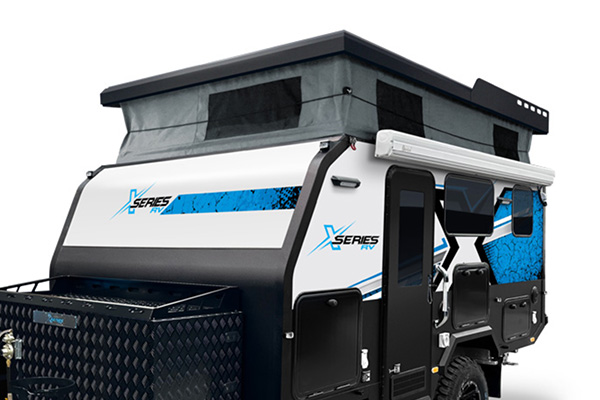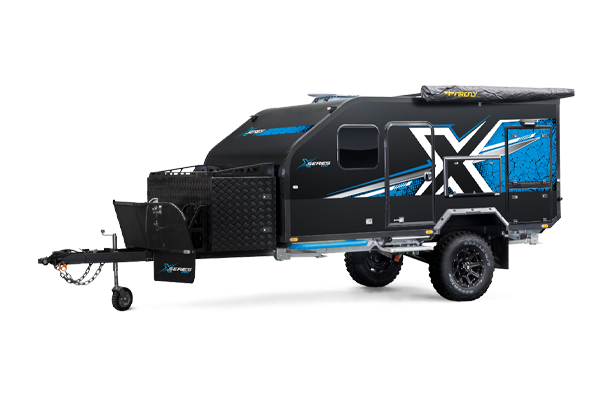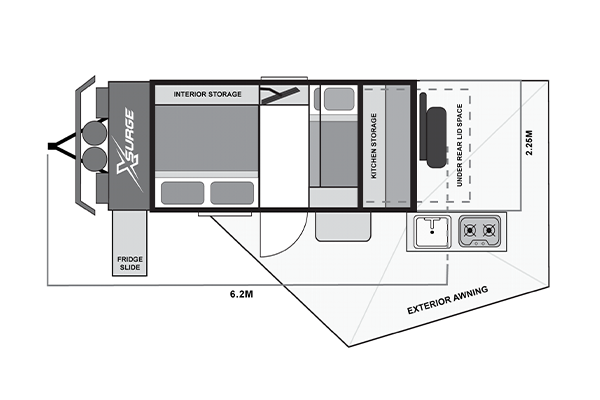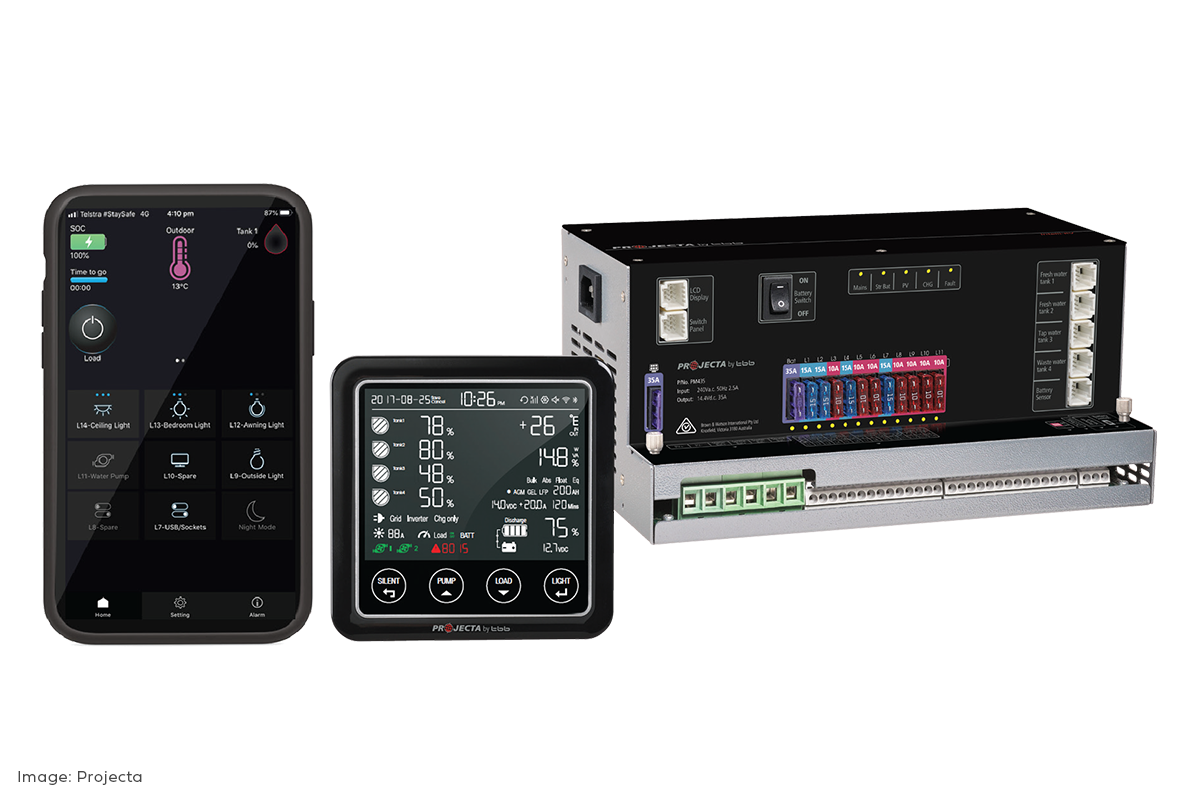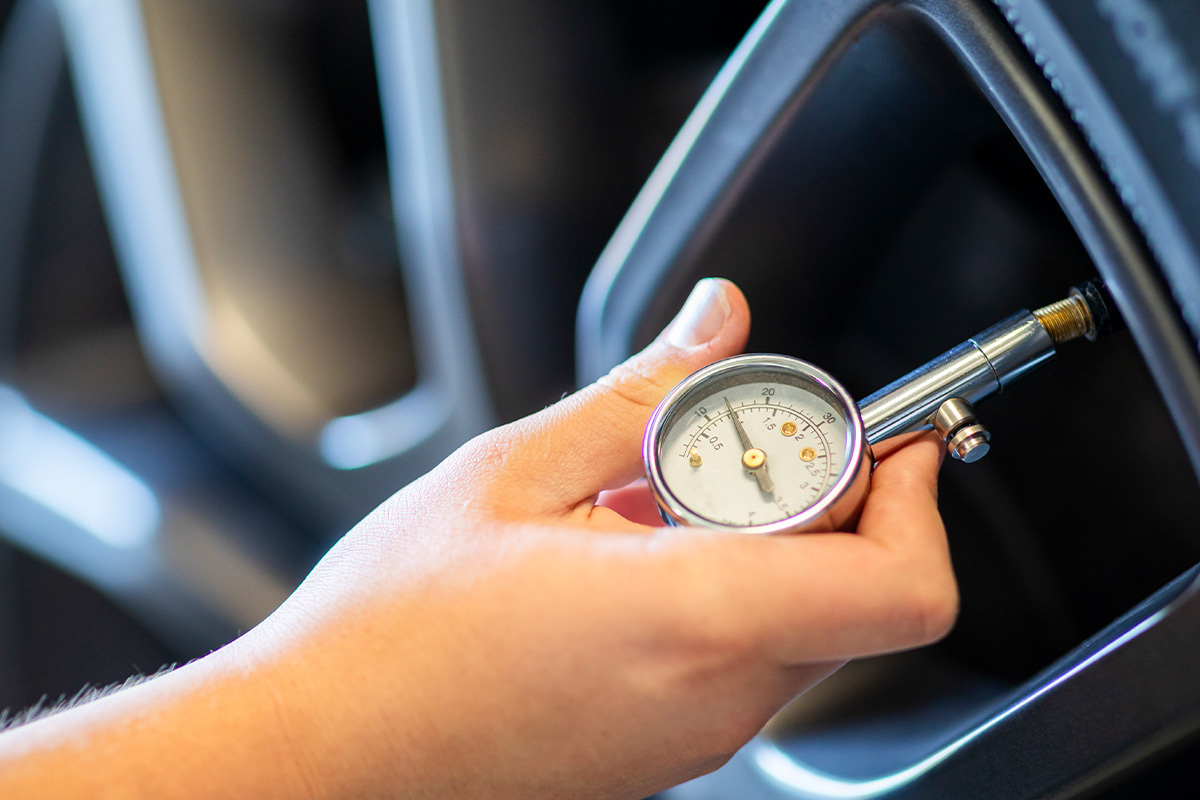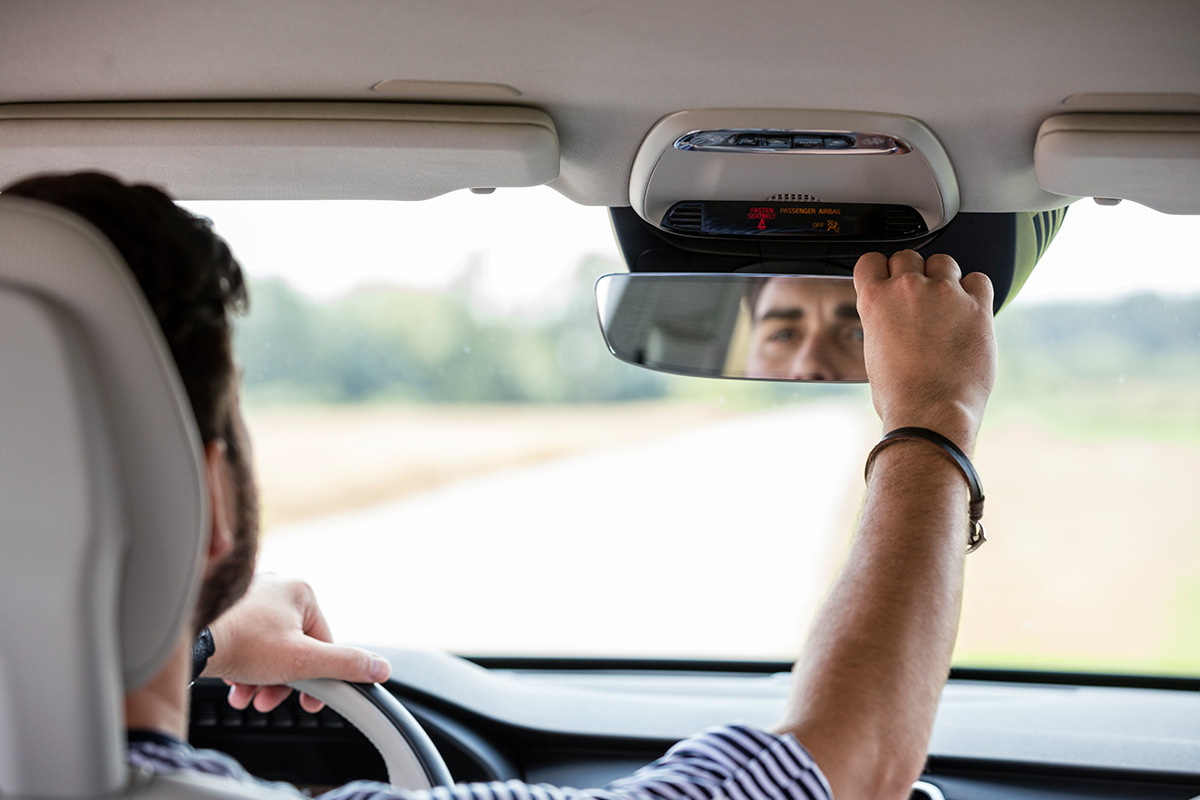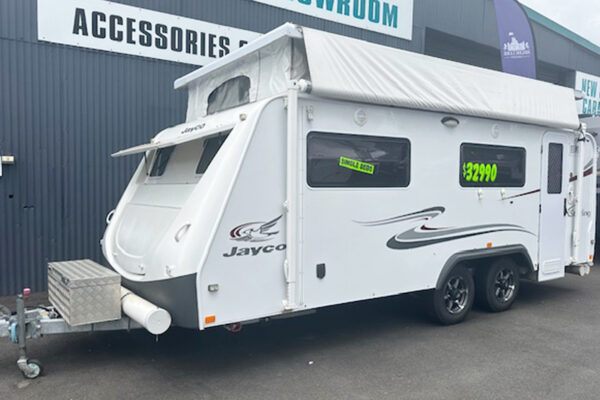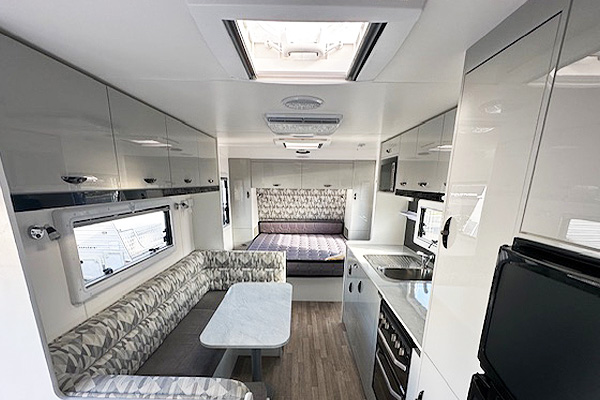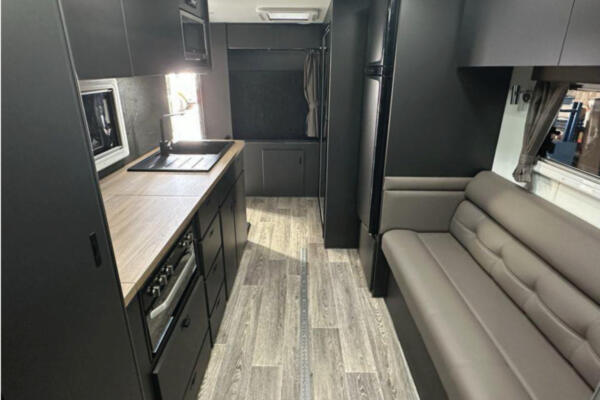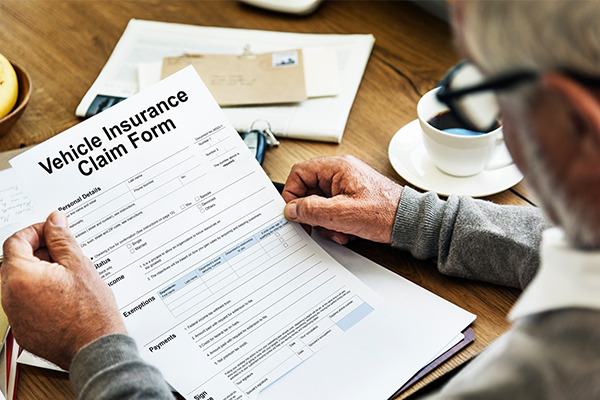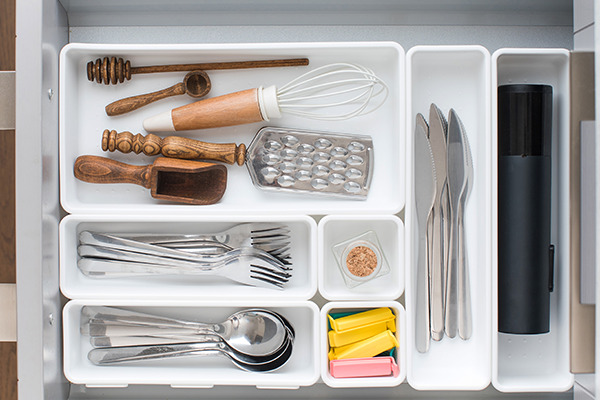Keep up to date with all things caravanning
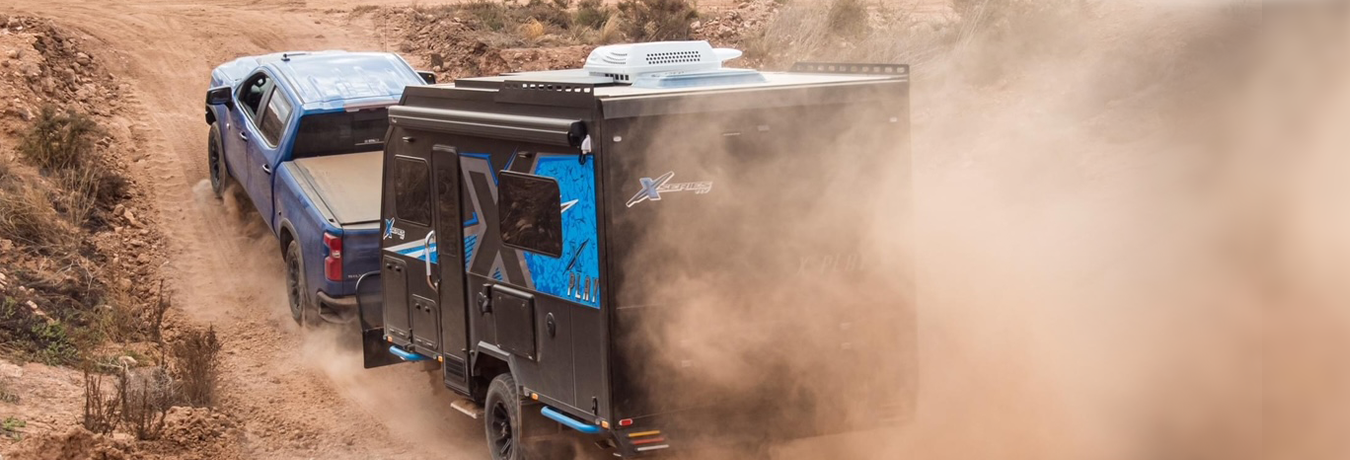
Guide To Caravan Towing Laws
April 4, 2025
There is no better feeling than heading off in a caravan for an adventure, but it is important to know the towing laws to make sure you have a safe journey. Towing laws differ in Australia per state in regards to speed and regulations. They can also change on occasion so it is important to keep aware of them. Our article is a complete guide to caravan towing laws, explaining all the rules, regulations and licenses required.
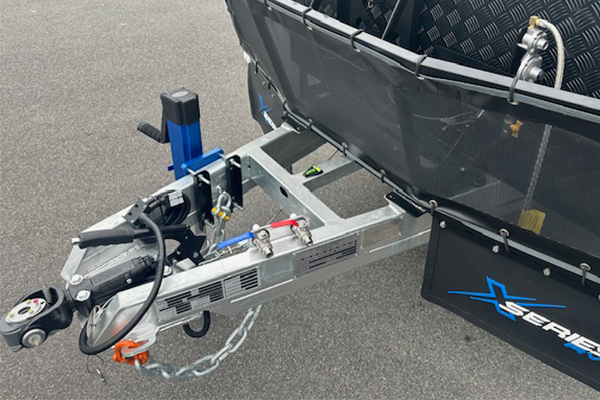
What is Caravan Towing?
Caravan towing is to pull a caravan attached with a tow bar behind a vehicle. You can tow a caravan on open roads or off bitumen roads, depending on the type of caravan and car you have. Caravan towing adds significant weight to a vehicle and requires careful planning, loading and a knowledge of the towing laws.
Do I Need a Caravan Towing Licence?
In most cases you do not need a caravan towing licence. You do, however, need a full drivers license to tow a caravan. This means a probationary driver or learner driver is not allowed to drive a vehicle towing a caravan. With a full licence, drivers can tow anything from a light camper to a large caravan as long as the gross vehicle mass (GVM) is less than 4500kg. Any more than 4500kg GVM and the driver will need to hold a light truck or light rigid licence.
Caravan Towing Laws
Caravan towing laws are in place to make caravanning safer and more enjoyable. Here are the basic caravan towing laws you need to know for safe and legal towing.
- Caravan must be roadworthy and registered: In order for a caravan to be legally allowed to drive on a road, it needs to be both roadworthy and registered. The roadworthy certificate shows that the caravan is fit to be used on public roads and compliant with local laws. A roadworthy certificate shows that it will be safe on the road and is mechanically safe to be towed.
- A towing vehicle must be roadworthy and registered with capacity: In the same way that a caravan needs to be registered and roadworthy, so does the towing vehicle. Towing vehicles have an added prerequisite in that they need to meet towing capacity. Towing capacity is the amount of weight a vehicle can tow safely and legally when pulling a caravan.
- Number plates must be visible: When towing a caravan, the number plates of the tow vehicle must be visible at all times. This means making sure the tow bar is not obstructing the number plate when the caravan is not attached. According to the Caravan Industry Association of Australia, a number plate fitted to the rear of a vehicle must not be more than 1300mm from the ground.
- Caravan must not exceed weight limits: The weight of the caravan is important as it relates to the tow vehicle. Part of caravan towing laws is that the caravan must not exceed the van’s maximum allowed trailer weight known as aggregate trailer mass (ATM). Specified by the manufacturer, this is the maximum allowable weight of a fully loaded caravan when it is unhitched from the tow vehicle, and includes luggage, passengers and accessories. The ATM is
- Maximum towing weight of vehicle must not be exceeded: There are laws about the amount of weight each vehicle can tow. The maximum towing weight must not be exceeded. Carefully consider the towing capacity of your vehicle which will be in the manufacturer’s handbook. This rating will include trailer weight capacity and trailer ball capacity both of which must not be exceeded.
- Mirrors must allow unobstructed view: If your caravan is wider than your tow vehicle, you will need extension mirrors. It is a legal requirement that your mirrors allow a clear view down each side of the vehicle and caravan.
- No travellers are permitted in a caravan while moving: It is illegal to have any passengers in the caravan while it is moving. Any passengers must be seated in the towing vehicle with seatbelts on.
- Must adhere to speed limits: As a general rule, the maximum speed limit a vehicle towing a caravan can reach is 100km. However, being too far under the speed limit is also an issue. When drivers are travelling well below the speed limit, it can cause unnecessary traffic holdups. It is not illegal to drive too slowly but slow drivers can be booked for unreasonably obstructing drivers.
- No towing anything behind the caravan: Towing anything behind a caravan is an illegal activity. It could cause weight issues, obstruct vision, or cause a major safety issue on the road. Too many variables exist for something to go wrong if there is something being towed behind a caravan.
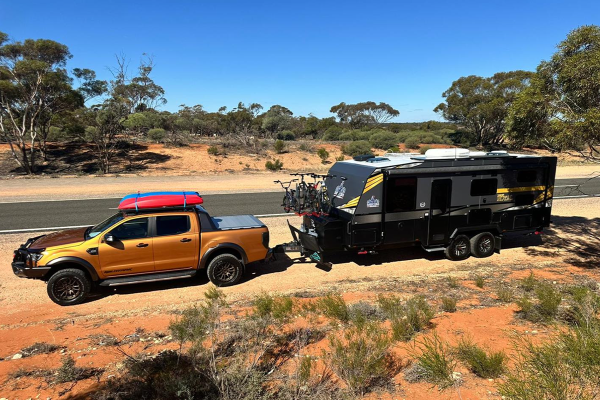
Caravan Towing Laws State by State
Each state has its own variation of the towing laws so it is important to know what they are particularly if you are travelling interstate. Towing requirements are legislated and policed at a state level. Details of these requirements can be sourced from the relevant State or Territory Transport Authorities. We examine the rules that apply to all states as well as state by state laws.
Rules That Apply Across All States
The vehicle and trailer must be roadworthy and registered (permits must be obtained if intending to tow without registration)
- The trailer must have a lit rear number plate that is not obscured by accessories, such as bicycle racks.
- Towbars and couplings must not cover the towing vehicle’s number plate or rear lights when the trailer is not connected.
- You may tow only 1 trailer (caravan, box or boat) at a time.
- People must not ride in caravans.
Weight & Load Limits
The total weight of the caravan must not exceed:
- The vehicle’s towing capacity (check the owner’s manual).
- The caravan’s Aggregate Trailer Mass (ATM).
- The towbar’s rated capacity.
- Learner drivers are not allowed to tow a caravan.
- P1 drivers (where applicable) may have restrictions on towing.
- The caravan must not carry passengers while being towed.
- The caravan’s load must be secured and must not be dangerously overhanging.
When assessing the load, consider the weight of the tow vehicle and trailer, including:
- The number of passengers you intend to carry
- The equipment in the tow vehicle, such as tools and camping gear
- Modifications to the tow vehicle, such as bull bars, long-range fuel tanks, supplementary batteries and roof racks
- The load on the trailer or caravan: The caravan – may include water tanks, gas bottles, food and drink, clothing, toys
Braking & Safety Equipment
All trailers of 750 kgs GTM or more must be fitted with brakes.
Braking requirements:
- 0 – 750 kg ATM: No brakes required.
- 751 – 2000 kg ATM: Must have brakes on at least one axle.
- 2001+ kg ATM: Must have brakes on all wheels.
- Breakaway systems are required for caravans over 2000 kg ATM (the brakes must activate automatically if the caravan detaches).
Safety chains must comply with Australian Standards:
- Trailers under 2500 kg → At least one safety chain.
- Trailers over 2500 kg → Must have two safety chains.
- Chains must be as short as practicable and crossed over if two are used.
- Towbars and couplings must be rated appropriately and not obstruct the number plate when the caravan is not attached.
- Caravans must have a lit number plate that is not obscured by accessories (e.g., bicycle racks).
- Towing mirrors or a rear-view camera are recommended for better visibility.
- NSW: Specific attachment rules.
Speed Limits & Road Rules
- Drivers must obey posted speed limits, but higher speeds increase the risk of caravan sway.
- When towing, allow extra space for braking and turning.
- Overtaking safely: Increased length means longer overtaking distances.
- Caravans and trailers must not exceed 2.5m in width and 4.3m in height.
- NSW & WA: Max 100 km/h for heavy/towing vehicles
- WA: If towing, you must keep at least 60m behind heavy vehicles or other towing vehicles (unless overtaking).
State-Specific Rules
Queensland(QLD)
If the vehicle was manufactured before 1 January 1992 and the manufacturer hasn’t specified a maximum towing capacity, use these towing capacities as a guide:
- 1.5 times the unloaded mass of the vehicle – if the trailer is fitted with appropriate brakes.
- A maximum of 750kg -if the trailer isn’t fitted with brakes.
- Towbars and couplings must not obstruct rear lights when the trailer is not attached.
If you’re unsure about the combined mass of the trailer and load, have it weighed at a public weighbridge.
New South Wales (NSW)
- P1 licence holders can only tow trailers up to 250 kg (unladen weight).
- The maximum towing speed limit is 100 km/h for vehicles exceeding 4.5 tonnes GCM, regardless of posted limits.
- Braking systems must be operable from the driver’s seat.
- Towing coupling must be strong enough to support the weight of a fully loaded trailer and must include a positive locking mechanism.
- Safety chains required.
Weight limit regulations in NSW
In NSW, towing has maximum weight limits determined by the combined weight of the vehicle and trailer. Light vehicles’ Gross Combination Mass (GCM) should be at most 4,500 kg. The Gross Trailer Mass (GTM) should not exceed the vehicle’s towing capacity as specified by the manufacturer. If the combined weight exceeds 4,500 kg, it is considered a medium rigid vehicle with potential licensing requirements.
Safety equipment NSW trailer regulations
Safety equipment is a vital aspect of towing in NSW. To ensure compliance with regulations, specific safety equipment must be in place, including:
- Towing mirrors: Use extended mirrors if your trailer or caravan is wider than your vehicle to ensure clear visibility of the entire length of the trailer.
- Safety chains: Trailers with a GTM of up to 2,500 kg should have at least one safety chain, while trailers with a GTM between 2,501 kg and 3,500 kg require two safety chains that comply with Australian standards.
- Couplings: Trailers with a GTM of up to 3,500 kg need a suitable coupling that meets Australian standards and matches the GTM.
- Brake systems: Trailers with a GTM over 750 kg must have an efficient braking system.
- For trailers with a GTM between 751 kg and 2,000 kg, brakes are required on at least one axle, while trailers with a GTM over 2,000 kg need brakes on all wheels.
NSW towing speed limits
In New South Wales, when towing, you can drive up to the posted speed limit, with a maximum of 110 km/h. If the combined weight of your vehicle and trailer or caravan exceeds 4,500 kg, the speed is limited to 100 km/h. Provisional drivers have a maximum speed of 90 km/h, and learner drivers are prohibited from towing.
Victoria (VIC)
- P1 probationary drivers cannot tow a caravan, except under specific conditions.
- Caravans must comply with the Road Safety (Vehicles) Regulations 2021 regarding length and rear overhang limits.
- Towing mirrors: Enhanced visibility for wider trailers.
- Safety chains: Required for trailers up to 2,500 kg (1 chain) and between 2,501 kg and 3,500 kg (2 chains), meeting Australian standards.
- Couplings: Suitable coupling for trailers up to 3,500 kg, matching GTM and complying with Australian standards.
- Brake systems: Mandatory for trailers over 750 kg (efficient braking system), trailers between 751 kg and 2,000 kg (brakes on at least one axle), and trailers over 2,000 kg (brakes on all wheels).
VIC caravan towing speed limits
Victoria does not have a separate towing speed limit. Following the posted speed limits and driving safely according to road conditions is essential. Drivers with a Learner Plate (L) are restricted to a maximum speed of 90 km/h, regardless of the posted speed limit.
Western Australia (WA)
- The maximum towing speed limit is 100 km/h, even if the road allows higher speeds.
- If towing, you must keep at least 60m behind heavy vehicles or other towing vehicles (unless overtaking).
Safety equipment WA
Safety equipment is vital for towing in Western Australia as it ensures vehicle safety and proper load security.
- Extended mirrors: Clear visibility for wider trailers.
- Trailers up to 2,500 kg: Trailers with a GTM up to 2,500 kg must have at least one safety chain meeting Australian standards.
- Trailers between 2,501 kg and 3,500 kg: Trailers with a GTM between 2,501 kg and 3,500 kg require two safety chains that adhere to Australian standards.
- Trailers up to 3,500 kg: Trailers with a GTM of up to 3,500 kg need a suitable coupling that meets Australian standards and matches the GTM.
- Efficient braking systems: Mandatory for trailers with a GTM over 750 kg.
- Trailers between 751 kg and 2,000 kg: Must have brakes on at least one axle.
- Trailers over 2,000 kg: Require brakes on all wheels.
South Australia (SA)
- Tow ball down weight (the weight applied to the towbar) must not exceed the vehicle’s limit.
- Towing mirrors: Necessary for trailers wider than the vehicle to maintain clear visibility.
- Safety chains: One chain is required for trailers with GTM up to 2,500 kg; two chains are needed for trailers between 2,501 kg and 3,500 kg; chains must adhere to Australian standards.
- Couplings: Appropriate coupling is necessary for trailers with GTM up to 3,500 kg, complying with Australian standards and corresponding to GTM.
- Brake systems: Efficient braking system is mandatory for trailers with GTM over 750 kg; brakes on at least one axle for trailers between 751 kg and 2,000 kg; brakes on all wheels for trailers with GTM over 2,000 kg.
Tasmania (TAS)
- Breakaway braking systems are required for caravans over 2000 kg ATM (same as all states).
- Overrun brakes are acceptable for trailers up to 2000 kg GTM.
- Breakaway systems required for trailers over 2000 kg GTM (must activate automatically if the trailer detaches).
- Shackles used for safety chains must exceed the rating of the safety chain and be fit for purpose.
- Extended mirrors: Ensure clear visibility for trailers or caravans wider than the vehicle.
- Safety chains requirement: Trailers up to 2,500 kg GTM require at least one safety chain, while trailers between 2,501 kg and 3,500 kg GTM require two chains meeting Australian standards.
- Coupling compliance: Trailers up to 3,500 kg GTM need a suitable coupling conforming to Australian standards and matching the GTM.
- Brake system specifications: Trailers with GTM above 750 kg must have an adequate braking system. Trailers between 751 kg and 2,000 kg GTM should have brakes on at least one axle, while trailers exceeding 2,000 kg GTM require brakes on all wheels.
NT & ACT (NT)
Weight limits
In the Northern Territory, towing weight limits are determined by the combined weight of your vehicle and the attached trailer or caravan. The Gross Combination Mass (GCM) must not exceed the manufacturer’s specified towing capacity, while the Gross Trailer Mass (GTM) should not exceed your vehicle’s towing capacity. Adhering to these weight restrictions is crucial for safe and legal towing, especially when dealing with larger caravans.
NT safety equipment and standards for registration
- Towing mirrors: Ensure clear visibility if the trailer is wider than the vehicle.
- Safety chains: One chain is required for trailers with a GTM up to 2,500 kg; two chains for trailers between 2,501 kg and 3,500 kg; chains must comply with Australian standards.
- Tow couplings: Suitable coupling needed for trailers with a GTM up to 3,500 kg, meeting Australian standards and matching the GTM.
- Brake systems: Efficient braking system necessary for trailers with a GTM over 750 kg; brakes on at least one axle for trailers between 751 kg and 2,000 kg; brakes on all wheels for trailers with a GTM over 2,000 kg.
Speed limits
Towing in the Northern Territory requires prioritising safety by following the conditions and adhering to posted speed limits. When towing, driving safely and appropriately for road conditions is essential. Learner drivers can tow with a displayed Learner plate.
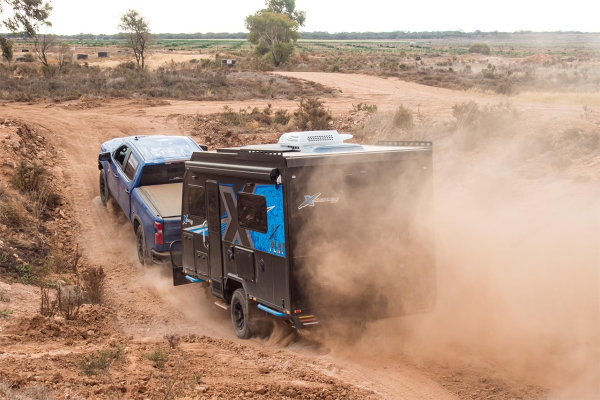
Best Practices for Safe and Legal Towing
While there are laws and regulations for towing a caravan, there are also some best practices to make your journey as safe as possible. Here are some handy hints for when you get behind the wheel of your towing vehicle.
- Consult the manual: Before towing a caravan, consult the vehicle’s manual to understand what the specific towing requirements are. This manual supplied by the manufacturer will document information about your vehicle’s towing capacity.
- Practice safe driving: Towing a caravan is more difficult than driving a regular vehicle, so it is important to practice safe driving techniques for towing. It might even be worth undertaking a caravan towing course to help you tow with confidence and handle challenging terrains or difficult situations.
- Be aware of tow mass: Be mindful of the tow mass, which is the combined weight of the caravan and tow vehicle. The combined mass has an influence on towing stability, acceleration and braking capabilities and the overall safety of the towing vehicle and caravan.
- Maintain safe distance from the vehicle in front of you: it is essential that, when towing a caravan, you allow at least 200m between you and the vehicle in front if the combined length of your caravan and vehicle exceeds 7.5m.
- Respect speed limits: For a caravan and vehicle with a GVM that does not exceed 4500kg, the regular speed limit is 100km/h. However, for combinations exceeding that figure, different speed limits may apply.
- Practice safe turns: Practice safe turns when you start driving a towing vehicle as caravans need a wider turning radius. Before heading out on a trip, practice making wide turns in a safe area.
Caravanning is a fun adventure but you need to be aware of the legal rules for towing. Our guide to caravan towing laws explains all the rules and regulations to help you comply with towing laws and make sure you have a safe and memorable trip. For further details go to Canterbury Caravans, the experts in their field.
